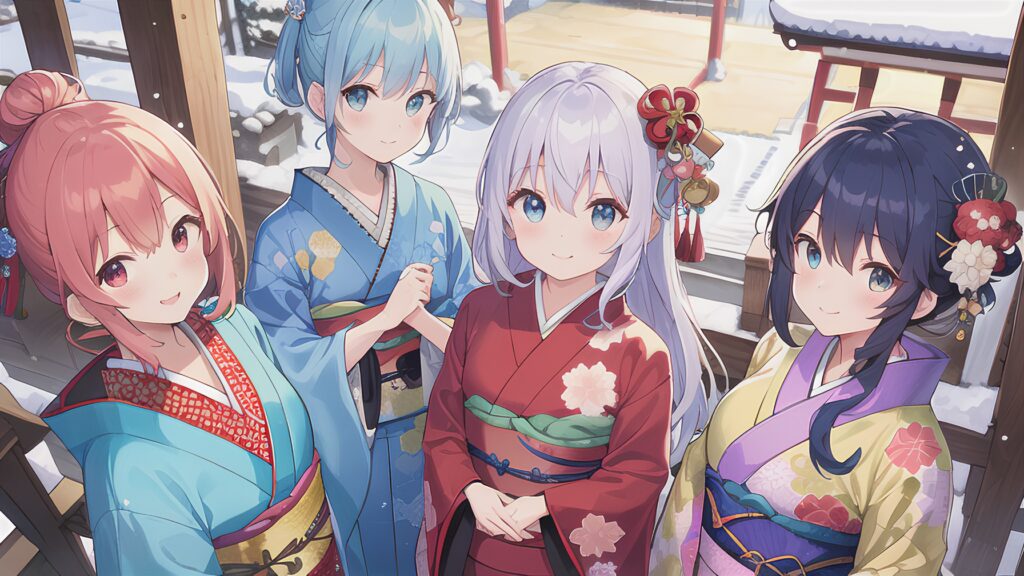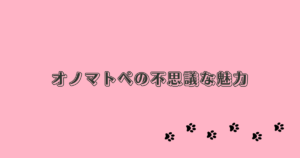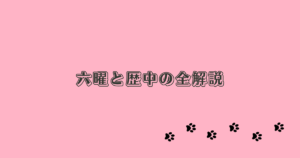新年あけましておめでとうございます。
昨年中は大変お世話になり、心より感謝申し上げます。
今年も皆様にとって素晴らしい一年となりますよう、健康とご多幸をお祈り申し上げます。
本年もどうぞよろしくお願い致します。
Happy New Year! I sincerely thank you for your support and kindness over the past year.
May this year bring you great joy, good health, and prosperity.
I look forward to continuing our wonderful relationship.
Best wishes for 2025!

日本の正月を知る:歴史・文化・過ごし方のヒント Discovering Japanese New Year: History, Culture, and Tips for Enjoyment
1. はじめに
Introduction
正月は、日本人にとって特別な時間です。年末の忙しさが一段落し、新しい一年を迎えるための準備として心も身体も休める時期となります。本記事では、正月の歴史や文化の背景を簡単に解説し、現代の過ごし方やヒントをご紹介します。
Japanese New Year (“Shōgatsu”) is a special time for people in Japan. It offers a moment of calm after the hectic year-end period and serves as an opportunity to prepare both mind and body for the upcoming year. This article will provide insights into the history and cultural significance of Japanese New Year, along with modern ways to enjoy and celebrate it.
2. 元旦とは?その意味と語源
What is “Gantan”? Meaning and Etymology
- “元旦”の意味とは?
- 「元」は一年の始まり、「旦」は日の出を表す漢字です。このため、「元旦」は特に年明けの瞬間から午前中までを指します。
- “Gantan” comes from two kanji: “Gen” (元), meaning the start of the year, and “Tan” (旦), symbolizing the sunrise. It refers specifically to the morning of January 1st.
- “元日”との違い
- 「元日」は1月1日全体を指しています。これに対し、「元旦」は日出から午前中に限定されます。
- While “Gantan” refers to the morning of January 1st, “Ganjitsu” covers the entire day.
3. 正月の歴史
History of Japanese New Year
- 古代の正月行事
- 日本の正月の起源は中国から伝わった「節句」にあります。平安時代には宮中で大規模な儀式が行われました。
- Ancient Japanese New Year customs originated from Chinese seasonal festivals. In the Heian period, elaborate rituals were held at the imperial court.
- 江戸時代の正月
- 年賀状や門松が一般人の間にも浸透したのは江戸時代に入ってからです。おせち料理もこの時代に発展しました。
- During the Edo period, traditions such as sending New Year’s cards (年賀状) and setting up decorative pine trees (門松) became widespread among the common people. Osechi cuisine also developed as a practical and symbolic custom.
4. 現代の正月の楽しみ方
Modern Ways to Celebrate
- 伝統的な過ごし方
- 初詣:名所での参拝マナーや年賀状を使ったご挨拶。
- おせち料理:各料理の意味を説明。
- Traditional customs include Hatsumōde (first shrine visit of the year), enjoying Osechi cuisine, and exchanging New Year’s greetings via cards or digitally.
- 新しいスタイルの正月
- SNSでの目標共有やオンラインイベント。
- New Year trends include sharing goals on social media and participating in online events.
5. おすすめの過ごし方プラン
Suggested Ways to Enjoy
- リラックス派向け
- お雑煮を楽しんだ後初詣に出かけるプラン。
- For a relaxing New Year, enjoy ozōni (soup with rice cakes) in the morning and take a tranquil shrine visit in the afternoon.
- アクティブ派向け
- 日本各地の個性的な行事を試してみましょう(例:秋田県の「なまはげ」)。
- Explore unique local events like the “Namahage” demon visits in Akita.
6. 正月に気をつけたいこと
Things to Keep in Mind
- 飲食の控え直しや高調の連休後の準備。
- Mind your eating habits and prepare for a smooth return to work after the holidays.

7. まとめとおわりに
Conclusion
日本の正月文化の魅力を再認識し、自分なりの過ごし方を見つける準備をしましょう。
Reflect on the charm of Japanese New Year traditions and find your own way to enjoy this special time of year.
それではまたね
See you next time!
他の記事も読む











コメント